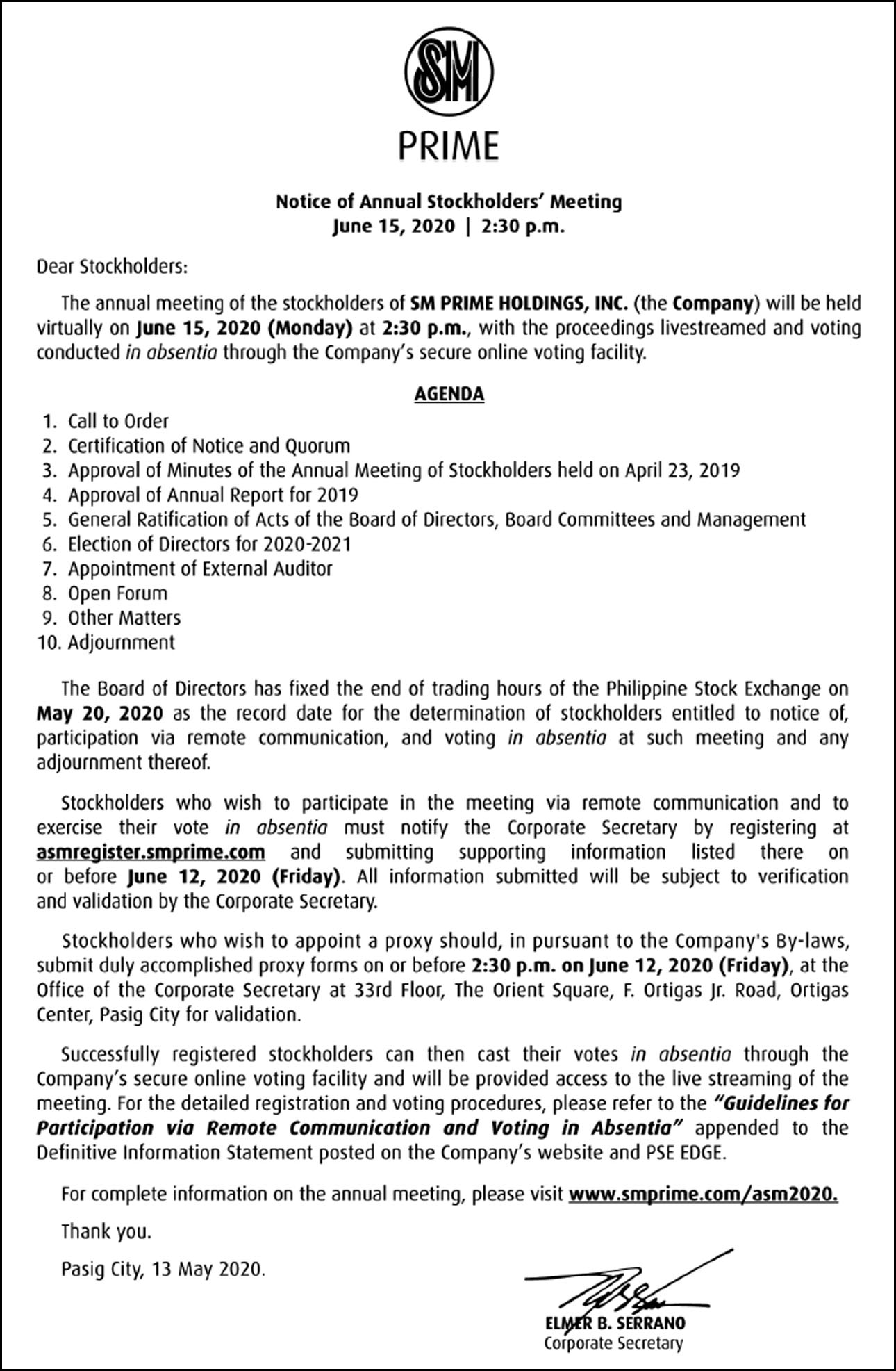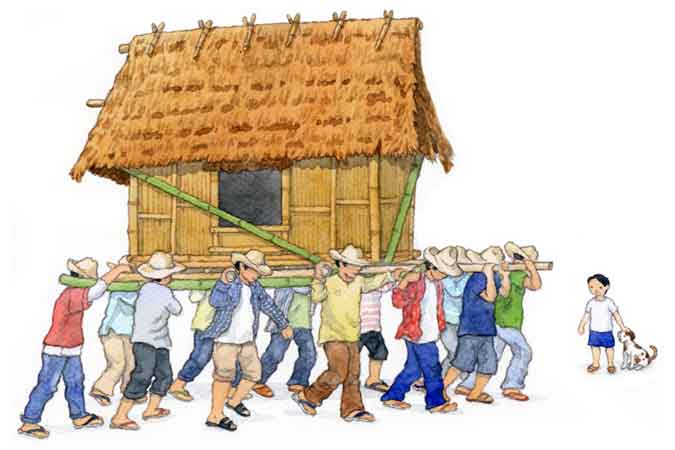After revising its GDP growth target to a more realistic -2 to -3.4%, the government is now crafting its economic recovery program in consultation with private sector stakeholders. I have been asked to provide feedback on the draft Philippine Program for Recovery with Equity and Solidarity (PH-PROGRESO), presented by Planning Secretary Karl Kendrick Chua in a virtual meeting with Manila’s top financial executives (FINEX). Below I share with readers my brief commentary.
I agree with Secretary Karl that the Philippines is better situated than many emerging countries to cope with this crisis given its stronger macroeconomic fundamentals, a product of building on past reforms across a wide front. I would particularly underline the tax reform law (TRAIN) and rice tariffication law, thanks to Secretary Carlos G. Dominguez and Secretary Karl.
However, this plague has changed the game radically. It would not be an exaggeration to call this the existential challenge of this generation, not just for the Philippines but globally. And while the Philippines has weathered past crises and learned from them, e.g. the 1997 Asian Financial Crisis, the 2008/09 Global Financial Crisis, and the debt-cum-political crisis of the mid-1980s, this one is arguably more fearsome.
The analogy made in the US is between “Main Street and Wall Street,” i.e., that a pox that affects the real economy will be more devastating to every Juan and Juana than one that originated from planet Finance. This is all the more true given: a) continuing uncertainties about the evolution of the virus, its spread and how long it will take for a cure or a vaccine to be developed; and b) the characteristics of the Philippines and our people, e.g. high density in Metro Manila, in particular the large number of slum communities, the most congested public transport system, the large numbers of people working in the informal sector, and difficulties in enforcing social distancing on a people who think traffic signs are just suggestions and on police officers who love to party.
Government working with the private sector seems to be finally getting its act together in implementing a T3 (testing, tracing, and treatment) strategy, after a poor start by the health department. It takes us out of the garbage-in-garbage-out (GIGO) testing and data collection path where we are forced to use blunt hammer solutions for a huge part of the economy on a prolonged basis. I note that our lockdown has been the longest and rated among the harshest in terms of people mobility, and therefore costly for the economy and most painful for our people. Hopefully, we are on the way out of that. The T3 program will provide the essential information going forward that can guide more granular actions on lockdowns, e.g., at the village or municipal rather than region-wide level as advocated by Presidential Adviser for Entrepreneurship Joey Concepcion.
Nevertheless, our experience so far suggests to me that it is more likely that the recovery will be a long U or W than a V. Our own forecast for GlobalSource Partners for GDP growth this year is south of the government’s downwardly revised low-end target of — 3.4%, i.e. -5 to -7%.
Government needs to play a key role in the survival, and later on, revival of the economy. Only the government has the “balance sheet,” the fiscal headroom, the huge reserves, the access to international financial markets. As the Central Bank Governor Benjamin Diokno said: “the political leadership and economic managers should focus on saving lives, saving livelihoods and saving jobs.”
I note that the exact modalities for some of the interventions are still being worked out. The following principles seem to underlie the planned support.
1. Use existing institutions rather than create new ones which will take time.
2. Where workable, employ risk sharing arrangements. E.g. between Philguarantee and banks. This both leverages government support and ensures credit discipline by requiring banks to have skin in the game. It also speeds up processing.
3. High selectivity in helping big firms.
4. Conserve fiscal resources, keep the powder dry; we don’t know how long this crisis may last.
I applaud the government’s readiness to provide more fiscal support than indicated earlier on. Though the elements are yet to be defined, this P846 billion (4.4% of GDP) is much higher than earlier numbers mentioned. The DBCC (Development Budget Coordinating Committee) assumptions talk about a fiscal deficit of 8% of GDP, after taking into account both the new spending and the drop in revenues with the GDP. This is sustainable and should not hurt credit ratings provided messaging is clear that this is temporary with a clear path to fiscal sustainability. Besides, most other countries’ fiscal deficit numbers will likewise crater and credit rating agencies will rate taking performance of other comparator sovereigns into account.
I am not too clear on support for micro and small firms, many of whom have no banking relationships. Perhaps there is a role for big government banks to partner with microfinance institutions. I have also come across an IMF blog that proposes that fiscal authorities and central banks cooperate to set up special purpose vehicles to partially buy loans of small borrowers from banks, something that in the past was a “no-no” for central banks but which now has become part of the “new normal” tool kit. (I commend the central bank for its innovative solutions in encouraging loans to MSMEs using the reserve requirement tool.)
In the meantime that these are being worked on, the government needs to continue providing direct support to poor families who live in communities that may continue to be under lockdown, or revert to one. Perhaps this can be done together with the T3 program at the barangay level. (It is most unfortunate that we still have no National ID system in place almost two years after the enabling law was passed).
Let me now offer some suggestions on the more medium-term reforms for economic revival. These are in the wish list of Foundation for Economic Freedom:
1. More flexibility in labor laws (working arrangements, minimum wages, firing policies, an apprenticeship law) as unemployment grows with the return of OFWs and loss of jobs, and to attract new investments in new activities. Such investment opportunities arise as countries and companies adjust to the plague-induced “new normal,” and earlier disruptions from the trade war and the digitalization under the 4th industrial revolution.
2. More reliance on PPP (public-private partnerships), including bringing to the finish line projects that have been under protracted negotiations to nurture hurt investor confidence, and so as to conserve now stretched fiscal resources. Government also needs to assure stability in regulation for ongoing projects and enact the long-standing PPP bill in Congress.
3. The following legislation should be prioritized to attract FDIs: the Public Services Act, the Retail Trade Act, the Foreign Investment Act.
4. Agricultural reforms: freeing the land market from agrarian reform rigidities, e.g. removal of restrictions on conveyance of CARP (Comprehensive Agrarian Reform Program) lands, removal of the retention limit of five hectares, amend the agri-agra credit law, amend the warehouse receipts laws.
5. Creating green jobs by stimulating forestry production through the liberalization of tree plantations.
6. Lifting the mining moratorium. Mining is a low-lying fruit for which the Philippines has a global competitive advantage.
Finally, the refinements in the CITIRA (Corporate Income Tax and Incentives Reform Act) bill are in the right direction to enhance the attractiveness of the Philippines as an investment destination, especially the drop in the corporate income taxes from 30% to 25% in the first year of implementation with leeway for the executive to reduce further.
Romeo L. Bernardo was finance undersecretary during the Cory Aquino and Fidel Ramos administrations.
romeo.lopez.bernardo@gmail.com





